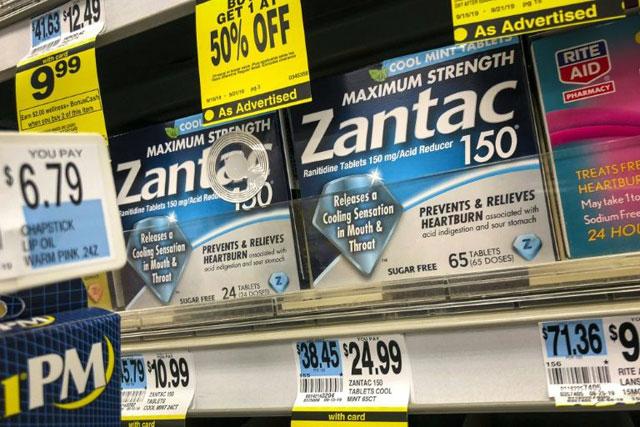You are here
Ice cube therapy may dilute pain from local anaesthetic injections
By Reuters - Nov 05,2017 - Last updated at Nov 05,2017

Photo courtesy of healthbeautyinformation.com
Briefly applying an ice cube to the skin could diminish the pain associated with local anaesthetic injections, a small study suggests.
Local anaesthetics are typically used to reduce pain when minor wounds need to be cleaned or stitched up, but the injections themselves are often considered the most painful part of the procedure, according to the National Institutes of Health.
As the study authors describe in the Emergency Medicine Journal online October 12, there are multiple ways to reduce the associated pain. They include mixing the local anaesthetic with sodium biocarbonate, applying eutectic mixture of local anaesthetics (EMLA) cream, and warming lidocaine to near body temperature.
But, the authors point out, each method has known drawbacks. The shelf life for lidocaine is shortened when it is buffered with sodium bicarbonate or warmed close to body temperature; additional equipment is needed for storage; tiny precipitates form after mixing with sodium bicarbonate; and EMLA cream is not approved for use on open wounds.
The Greek philosopher and physician Hippocrates, often considered the father of medicine, first described the technique of applying cold to reduce pain, the researchers noted. Since then, at least in terms of procedural analgesia, several studies have demonstrated that a cooling spray or ice cubes effectively reduced pain when veins and arteries need to be punctured.
The current study, conducted by Dr SangChun Choi and colleagues at Ajou University Hospital in the Republic of Korea, involved 50 patients, ages 18 to 65, who were having simple lacerations repaired in the emergency department.
Half the patients were assigned to receive cryotherapy, in which an ice cube placed inside a sterile glove was applied to the wound for two minutes before a lidocaine injection. The other patients received standard care, with no special treatment before the injection.
Patients were asked to rank their pain after the injection, on a scale of 1 to 10, with 10 being the worst.
In the ice cube group, half the patients ranked their pain level as no higher than 2, whereas in the control group, half the patients had a pain score of 5 or higher.
Overall, the authors report, the results showed that ice cube cryotherapy could significantly reduce perceived pain from local anaesthetic injections, without increasing wound complications.
“Cryotherapy appears to be safe, pragmatic and effective,” study authors concluded, noting that in contrast to other known methods to reduce pain associated with local anaesthetic injections, this approach does not involve the modification of anaesthetic administration, any special equipment, or additional expenses.
Dr Ian Gibbons, a senior house officer at Royal Surrey County Hospital in Guildford who was not involved in the study, commended the potential of ice cube therapy. He noted in an e-mail to Reuters Health that it’s relatively cheap and readily available.
Dr Ryan Stanton, a spokesman for the American College of Emergency Physicians, told Reuters Health by e-mail, “I don’t think you can declare it ‘completely safe’ with those small numbers, but ice is commonly used for analgesia. There is more to determine, but I’m sure it has a role and it’s cheap with few likely issues.”
Stanton, who was not involved in the study, said the challenge with ice therapy could be that if administered for too long, it could lead to tissue damage, and that physicians may be tempted to grab ice cubes out of dispensers, instead of waiting for a sterile ice cube.
Whether this approach is adopted will likely depend on the healthcare provider’s personal preference and patient population, he said, “but I don’t expect to see official protocols” calling for ice cubes.
The researchers acknowledged several weaknesses of their study. For example, there weren’t enough patients to show whether pain reductions might be different in various parts of the body. In addition, although researchers who collected data on pain scores were separate from those who gave the injection, it would be easy to discern which group the patient was part of upon detecting colder skin. Furthermore, variables including the depth of the needle tip, the speed of the injection, the amount injected, and choice of local anaesthetic could impact pain scores.
Gibbons also underscored the likelihood of an amplified placebo effect, noting that “surely people would be able to tell if there was an ice cube on them?”
Pain scores can also be extremely subjective, he added, “I’ve seen people with broken hips describing 1/10 pain and people with nothing wrong with them playing on their phones describing 10/10 pain.”
Related Articles
AMMAN — Zantac, a medicine used as an anti-acid and to treat ulcers, has recently been withdrawn from pharmacies, according to the Jordan Fo
Across the world, the excessive consumption of sodium — hiding in breads, soups and snack foods and beckoning from salt shakers everywhere — is the cause of some 1.65 million deaths by heart disease and strokes yearly, including roughly 667,000 “premature” deaths — those before the age of 70 — says a comprehensive new study.
SAN DIEGO — A diabetes drug developed by a San Diego biotech company from a venomous lizard’s saliva reduces Parkinson’s disease symptoms, a



















